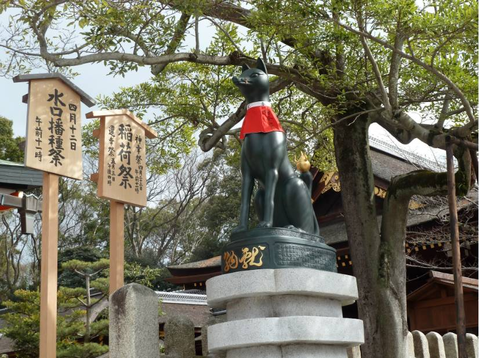Fushimi Inari
May 23, 2012 (Wed.)
At Kansai Gaidai we often mention the geographical advantage as one of the university’s strong points. One of the best ways to explore the meaning of “geographical advantage” is to take the Keihan Line to Fushimi Inari Station.
You can tell that something is different from the moment you arrive at the station and are greeted by its bright orange coloring and the foxes that crowd the station, but Fushimi Inari is even more different than you may guess and even more beautiful than the scenes you may remember from Memoirs of a Geisha.
Fushimi Inari is one of the most popular Shinto shrines in all of Japan and it truly stands out among the many shrines and temples of Kyoto with its seemingly endless pathways of Orange torii(gates) that lead up the mountain behind the main shrine.
The shrine is dedicated to Inari, the Shinto deity of rice, fertility and commerce, and the mountain is littered with statues of Inari’s messenger, the fox.
Fushimi Inari is not so much a shrine to visit and see as it is a shrine to experience. The torii-lined pathways are sometimes fairly steep, and to see the entire temple at least half a day of hiking is needed. This may scare away some potential visitors, but those who choose to challenge Fushimi Inari are in for a profound experience.
If possible, try to visit the shrine in the evenings, when the crowds have dispersed and you can walk among the lantern-illuminated torii alone with your thoughts.
The mountain comes alive as the sun goes down, and you can feel the connection between religion and nature with every step you take. It is an eerie and otherworldly feeling that you will be hard pressed to find anywhere else.
This is a part of what we mean by geographical advantage, having a completely different world, less than half an hour away by train.



